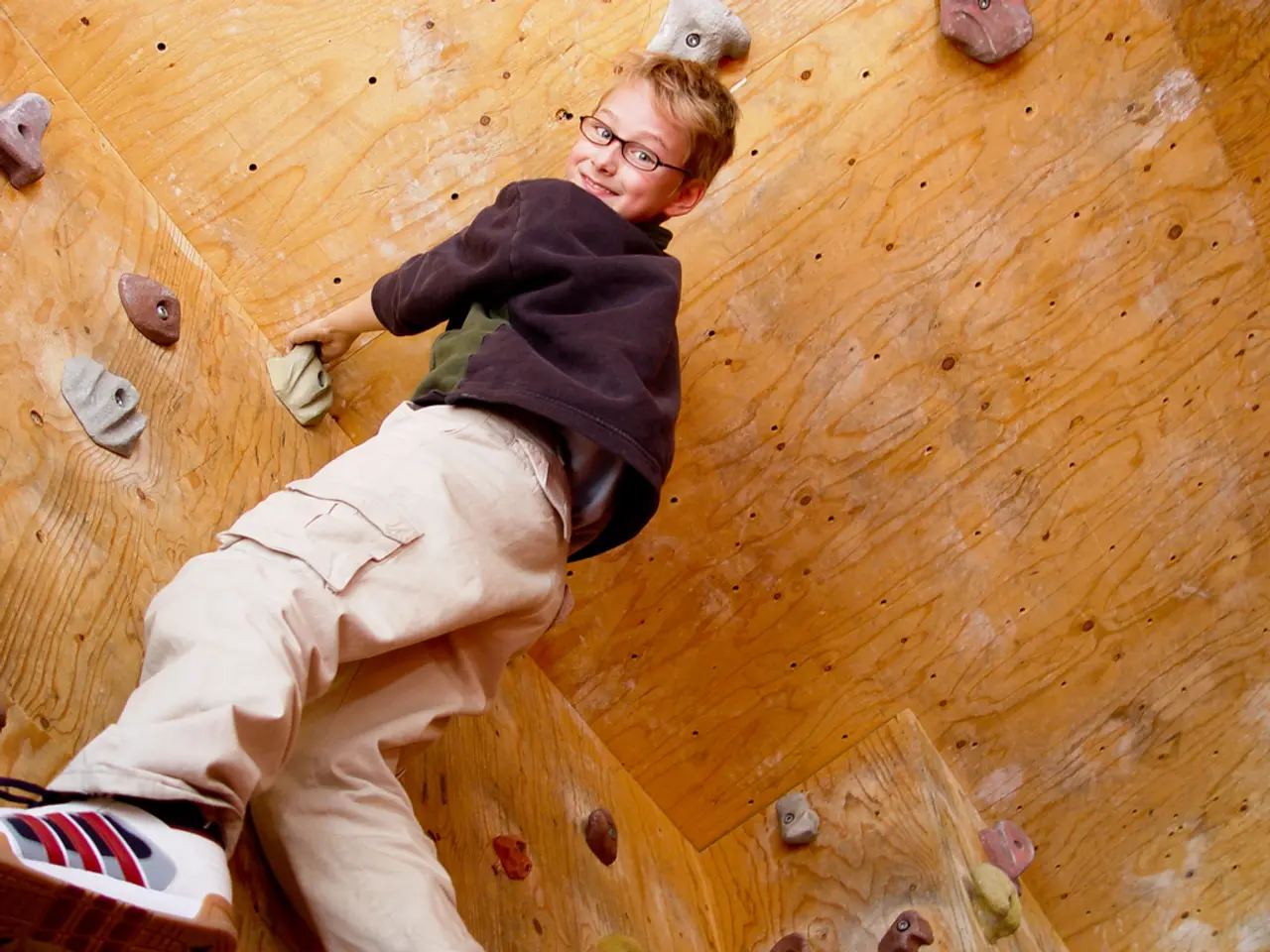Strategies for Encouraging a Growth-Oriented Perspective in Your Child's Development
In a world where resilience and adaptability are key to success, teaching children a growth mindset has become increasingly important. A growth mindset, as opposed to a fixed mindset, embraces the idea that talents and abilities can be developed through hard work, learning, and perseverance.
One effective strategy to instil this mindset in daily life is encouraging journaling and reflection. Using growth mindset-focused journals, such as the Big Life Journal for Kids, allows children to set personal, attainable goals, reflect on challenges, and be inspired by stories of persistence and famous failures who never gave up. Sharing this experience with a peer or adult, known as a "journal buddy," can enhance motivation and accountability.
Another approach is to support risk-taking and resilience. Children should be encouraged to take on new activities, even if success is uncertain, and to view mistakes as natural steps in learning. Helping children reflect on setbacks by asking questions like "What would you do differently next time?" reinforces that effort and persistence matter more than immediate success. Allowing children to wrestle with challenges on their own, rather than rescuing them too quickly, helps them develop resilience through experience.
Creating a growth-focused home environment is crucial. Using positive language around learning and failure, displaying growth mindset reminders, and celebrating effort rather than fixed traits like intelligence helps reinforce this mindset. Breaking goals into manageable steps and regularly discussing what was tried hard at during the day reinforces growth-oriented habits. This consistent messaging makes growth a shared family value.
Fostering flexible thinking through play and creativity is another essential aspect. Activities that build cognitive flexibility, such as building with LEGOs or plastic cups, process art projects, and creatively switching up familiar stories, help children learn there are multiple ways to approach problems and challenges. Celebrating flexibility in thinking supports a mindset open to learning and change.
Using books, movies, and stories that highlight growth mindset themes or characters overcoming obstacles can be an enjoyable way to reinforce these ideas. Discussing the difference between fixed and growth mindsets in characters helps children identify and adopt growth-oriented attitudes themselves.
Adults demonstrating adaptability and problem-solving in everyday situations helps children internalize flexible thinking. Encouraging them to brainstorm multiple options and make choices empowers them to see challenges as opportunities for creativity and growth.
Implementing these strategies consistently can help children internalize the belief that abilities develop through effort and learning, equipping them with the resilience and mindset to thrive in diverse situations in their daily lives. Facing and overcoming challenges not only builds character but also strengthens problem-solving skills.
Cultivating a growth mindset in children is important as it shapes their behaviour, motivation, and ability to persevere. Keeping a "growth journal" can reinforce a growth mindset and provide a tangible record of progress. Encouraging journaling or drawing as a way to process learning experiences helps children process emotions and reinforces the lessons learned from challenges.
Effort-based praise encourages children to associate success with hard work, rather than innate talent. Setting realistic and growth-focused goals together with a child and celebrating incremental progress helps reinforce a growth mindset. Encouraging everyone in the household to adopt growth mindset language reinforces a positive outlook.
Setting up spaces that stimulate curiosity, such as a reading corner or a craft station, helps create a learning-rich environment at home. Creating areas in the house where a child can explore interests fuels a sense of wonder and curiosity. Exposing a child to diverse activities broadens their horizons and fuels a love for learning.
The growth mindset revolves around several core principles: embracing challenges, learning from criticism, viewing effort as essential, and finding inspiration in others' success. Adopting a growth mindset early in life lays a foundation for lifelong learning, confidence, and resilience. Small and consistent efforts can lead to big changes over time, helping a child build resilience, embrace learning, and develop the confidence to face any challenge.
Celebrating effort, rather than focusing solely on results, teaches children to value the learning process and strive for improvement. If a parent approaches challenges with a defeatist attitude, their child may adopt a similar mindset. Children with a growth mindset see mistakes as opportunities for improvement. Teaching a child to reflect on mistakes by discussing what went well, what didn't, and what they learned turns mistakes into valuable learning experiences.
Using growth-oriented language at home, such as "I haven't figured this out yet, but I'm working on it," normalizes the process of struggling and learning as a natural part of growth. Setting up an "effort wall" at home can serve as a visual reminder that effort is valued and worth celebrating. Encouraging a child to see challenges as chances to grow rather than obstacles to avoid helps them view challenges in a more positive light.
Using the word "yet" when discussing challenges can transform a child's perspective from one of limitation to possibility. Parents who view difficulties as opportunities for growth are more likely to raise children who share the same perspective. Cultivating a growth mindset is an ongoing process that requires patience, persistence, and consistent effort, but the rewards are immense. Sharing stories of well-known figures who embraced failure to succeed can inspire children to keep trying, even when the going gets tough.
- The Big Life Journal for Kids, a growth mindset-focused journal, allows children to set personal, attainable goals, reflect on challenges, and be inspired by stories of persistence and famous failures who never gave up, promoting a growth mindset.
- Sharing the journaling experience with a peer or adult, known as a "journal buddy," can enhance motivation and accountability, reinforcing the idea that talent and abilities can be developed through learning and perseverance.
- Celebrating effort rather than fixed traits like intelligence in a growth-focused home environment helps reinforce a mindset that abilities develop through effort and learning, equipping children with the resilience and mindset to thrive in diverse situations.
- Using books, movies, and stories that highlight growth mindset themes or characters overcoming obstacles can be an enjoyable way to reinforce these ideas, helping children identify and adopt growth-oriented attitudes themselves.








